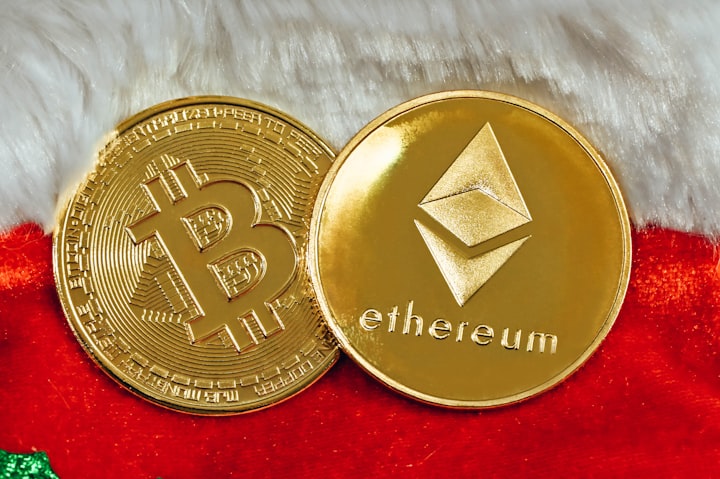
I like to use the concept of ‘good enough money’. If the money you want to use is good enough for your purposes, then that is ok. For example, when I borrow cash from my colleagues to buy my lunch, sometimes I pay them back in Grab credits. Grab is a ride-hailing app similar to Uber, but localized for Asia, and it also has a wallet function which you top up with your credit or debit card. The credits are denominated in local currency and can be used to pay for journeys, sent to other users, or used to pay for goods in some shops.
Some of my colleagues use Grab for their taxis, so paying them back in Grab credits is fine for me and fine for them. So, Grab credits are ‘good enough money’ as far as we are concerned for that particular small denomination use. But I wouldn’t buy a house with Grab credits, nor would a company settle a large invoice with it. It wouldn’t be ‘good enough money’ in those situations. It seems that people and companies will accept a wide range of forms of money so long as they can do the next thing with it—whether that is paying for a taxi, settling invoices, or saving it for long term value appreciation.
Gold Standards
Some people talk about The Gold Standard. In fact, there is no such thing as the gold standard. There are a few types of gold standard:
1. Gold specie standard. Coins are made of gold and are a certain weight and purity in convenient standard units instead of random shapes, sizes, and weights. This is called a gold specie standard. Specie is a Latin word for ‘the actual form’. This is commodity money.
2. Gold bullion standard. Notes (bits of paper) are redeemable or convertible at the issuer (usually the central bank) for gold—usually in the form of gold bullion (this means bars of gold of certain standard weights and purities). This is called a gold bullion standard. This is representative money.
3. Non-convertible gold bullion standard. This is where the issuer declares that their currency is worth a certain amount of gold, but doesn’t allow you to redeem your money for gold. This is starting to blur the lines between representative and fiat money.
When people talk about the gold standard, they usually mean a gold bullion standard where a note represents some defined amount of gold and can be redeemed for it. The issuer of the currency, usually a central bank, pegs their currency to a fixed weight in pure or fine gold and tells the world that they will exchange one unit of currency for a certain amount of gold stored in their vaults. This is a currency peg, which we discussed earlier, and means they need to have the gold in their vaults in order to remain credible and promise to let people redeem their notes for gold. The amount of gold you have in your vaults is largely irrelevant if you don’t let people redeem their notes.
When a few countries adopt a gold standard, the exchange rates between their respective currencies become effectively pegged. In theory, you can always sell one currency for gold, and then buy a known amount of another ‘gold standard’ currency with it. So the gold peg rates also determine the currency-to-currency exchange rates. Before the First World War, the effective exchange rate between the US dollar and the pound sterling was $4.8665 to £1 because both currencies were on a gold standard. Of course, there are costs and risks involved in the transactions and the storage and transport of the gold, so that is why it is an effective peg with some wiggle room, rather than an absolute peg.
Before we look at an example of a gold standard, let’s clear up some terminology. Gold and silver are measured by weight (or mass, to be pedantic). The units are grains and troy ounces. There are 480 grains to one troy ounce, and twelve troy ounces to one troy pound. In standard terms, this means one troy ounce is 31.10 grams, which is about 10% heavier than one ‘normal’ (or avoirdupois) ounce of 28.35 grams. Old habits die hard—the troy ounce is still the measure used today when pricing gold and other precious metals.
Gold Standards in the USA
Although many countries have attempted to peg their currencies to gold, the USA has had an interesting history. According to Brief History of the Gold Standard in the United States41 published by the Congressional Research Service, the USA went through a number of periods with multiple attempts at pegging the US dollar to gold. They all eventually failed. Let’s look at what happened.
1792–1834—Bimetallic specie standard: Standardised gold coins ($10 eagles, and $2.50 quarter-eagles) and silver coins existed, minted by the government. The definition of one dollar was based on a certain weight of silver or a certain weight of gold which valued the metals in the ratio 15:1. World markets valued gold a little more than implied by the USA’s peg, so gold coins left the USA, leaving the USA mainly using silver coins.
1834–1862—Silver flees the USA: The USA changed their ratio to 16:1 by minting the gold coins with slightly less gold. World markets now silver a little more than implied by this new ratio. Thus, the silver coins left the USA, leaving the USA mainly using the new, less-goldy gold coins. It is hard to peg things that trade in markets abroad!
1862—Civil War chaos and fiat paper money: The USA government issued notes called ‘greenbacks’. Greenbacks were notes that were declared as legal tender, but were not convertible into gold or silver. This took the USA off any metallic standard and onto fiat paper money.
The dollar lost value in the marketplace, and people preferred to hold
23.22 grains of gold more than one dollar.
1879–1933—A true gold standard: A dollar was re-defined in terms of the pre-war weight of gold (but not silver) at $20.67 per troy ounce.
The treasury issued gold coins and convertible (redeemable) gold notes, and greenbacks were once again redeemable in gold. The Federal Reserve System was created in 1913.
Allow me to digress just for a bit of fun. This was a difficult political period that coincided with the birth of populism in the US. Indeed, L. Frank Baum’s book The Wonderful Wizard of Oz is regarded by some as a clever political satire, a parable on populism, and a commentary on monetary policy. References are numerous. Yellow brick road? Gold.
Ruby slippers? In the book, they were silver, and a reference to a populist demand for ‘free and unlimited coinage of silver and gold’ at the 16:1 ratio. Scarecrow? Farmers who weren’t as dim as first thought. Tin Man? Industrial workers. Flying monkeys? Plains Indians.
The Cowardly Lion? William Jennings Bryan, Nebraska representative in Congress and later the democratic presidential candidate. Emerald City, where the Wizard lives? Washington DC. The Wizard, an old man whose power is achieved through acts of deception? Well, pick any politician in Washington. Now can you guess what ‘Oz’ is a reference to? Yes, the unit for precious metals. These parallels are discussed in more detail by Quentin P. Taylor, Professor of History, Rogers State College in a fascinating essay “Money and Politics in the Land of Oz.”42
1934–1973: The New Deal and the end of the true gold standard. The 1934 Gold Reserve Act devalued the dollar from $20.67 to $35 per troy ounce, and ended convertibility for citizens. ‘The free circulation of gold coins is unnecessary,’ President Franklin Roosevelt told Congress, insisting that the transfer of gold ‘is essential only for the payment of international trade balances’. The Gold Reserve Act outlawed most private possession of gold, forcing individuals to sell it to the treasury. Those found hoarding gold in coin or bullion could be punished by a fine of up to $10,000 and/or jail time. According to Wikipedia43:
A year earlier, in 1933, Executive Order 6102 had made it a criminal offense for U.S. citizens to own or trade gold anywhere in the world, with exceptions for some jewellery and collector’s coins. These prohibitions were relaxed starting in 1964—gold certificates were again allowed for private investors on April 24, 1964, although the obligation to pay the certificate holder on demand in gold specie would not be honored. By 1975 Americans could again freely own and trade gold.
This quasi-gold standard was maintained under the Bretton Woods international monetary agreement of 1944. The Bretton Woods agreement is explained in greater detail later.
1971: The Nixon administration stopped freely converting dollars at their official exchange rate of $35 per troy ounce. This effectively ended the Bretton Woods agreement.
1972: The dollar was devalued from $35 to $38 per troy ounce.
1973: The dollar was devalued from $38 to $42.22 per troy ounce.
1974: President Gerald Ford permitted private gold ownership again in the USA.
1976: The gold standard was abandoned in the USA: The US dollar became pure fiat money.
So people talk about the gold standard, but let’s be realistic: It is not really a gold standard if (a) people can’t redeem their dollars for gold, and
(b) you keep changing the rate. It turns out that implementing a gold standard is difficult, even if you can put people in prison for owning gold!






Comments
There are no comments for this story
Be the first to respond and start the conversation.